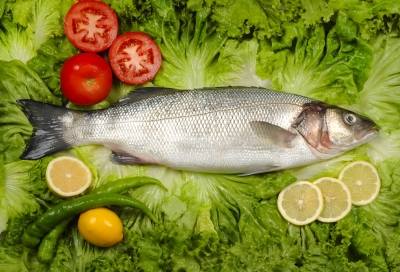
Consumers of seafood may have an idea if their fish is wild-caught or farmed, but how many know aquaculture's impact on the environment?
A new report entitled "Blue Frontiers" complied by the World Fish Center and Conservation International sets out to address that question and help steer the aquaculture industry towards greater sustainability.
Aquaculture can reduce the pressure on wild fisheries, although small fish used as fishmeal for carnivorous, farm-bred species like salmon are caught in the wild, as are young fish (fingerling) for tuna and reef fish before being grown in captivity.
Already more than 50% of the world's seafood comes from aquaculture, including 73% of all salmon and over half of the global supply of crabs and lobsters.
Aquaculture production (estimated to be worth over $100 billion each year) is expected to grow from 65.8 million tons in 2008 to over 100 million tons by 2030.
"Current trends indicate that the majority of the increase in global production will come from South and Southeast Asia, with a continued drive by major producer counties such as China and Vietnam towards export to European and North American markets," said Mike Phillips, a co-author of the report.
There are a number of well-founded concerns about aquaculture, in terms of its impacts on marine ecosystems and wild fisheries.
Ensuring that growth in the market doesn't take its toll on the environment is the main concern of Dr Sebastian Troeng, vice president for marine conservation for Conservation International.
"There are a number of well-founded concerns about aquaculture, in terms of its impacts on marine ecosystems and wild fisheries," said Troeng.
Innovation and the sharing of best practices are key to protecting the environment as aquaculture increases, Troeng believes.
The biggest threats to the environment come from the areas with the most production, namely Asia; the continent accounts for 91% of the world's aquaculture, with China alone proving 64%.
"China is certainly a place where there are opportunities to improve efficiency and best practice with better motioning and compliance," said Troeng.
"Something that is a particular concern to a marine conservation group is the reliance on wild captured fish; the amount of fish needed to feed aquaculture. Any efficiency in that regard would be very beneficial."
The report studied 13 different species and 75 different production techniques grading them against six environmental effects, from acidification and contribution to climate change to land-use and reliance on wild fish for feed.
Carnivores like shrimp, prawn and salmon proved to have biggest appetite for wild fish as fishmeal, while carp, bred in in-land ponds, proved the worst offender overall in terms of damage to the environment.
Best for the environment, according to the report, are bivalves like oysters and mussels, and seaweed, which can actually help reduce nitrates and phosphates in water.
But even the worst offenders on the report's list are better for the environment than beef or pork.
The report found aquaculture is on a par with chicken, but better than beef and pork when it comes to creating emissions of nitrogen and phosphorus, the gases that can contribute to global warming.
Fish is also lighter on the need for animal feed: the production of one kilogram of fin fish protein requires less than 13.5 kilograms of grain compared to 61.1 kilograms of grain for beef protein.
While the UN's Food and Agriculture Organization supplies guidelines on best-practice and some certifications for aquaculture exist, globally there remains a wide variety in how seafood is produced.
"Similar species and production systems had quite different impacts depending on what country they're in," said Troeng.
"But I'm an optimist. I think given how important aquaculture has become — we're eating as much from aquaculture as is caught wild — governments and private sector will help to improve efficiency in the future."
Article courtesy of cnn.com
Image courtesy of Suat Eman

